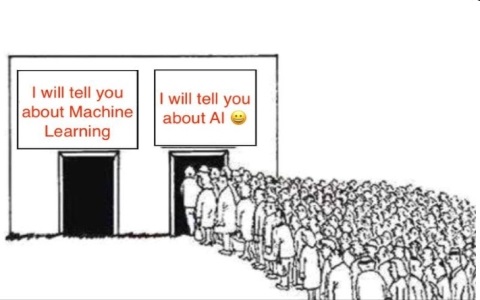A Comprehensive Guide to Data-Driven Success
I must admint, since my childhood, I have been fasinated by ΔE = Δmc2, probably because of the simplicity it offers and yet the complexity it hides behind it. Many can disagree, but I used to believe that this was one of the most powerful equations around (another one being eiπ + 1 = 0), if not the most powerful equation. It was the gold standard of all other equations. During my school days, I was exposed to y = mx + c. Untill I was exposed to Econometrics and later to Machine Learning, I never realized the power of one of the very basic equation in mathematics i.e. y = mx + c. This mathematical equation is the very basis of entire Machine Learning and AI.
Generative AI is the Proof, that all "that" is happening again. Probably, for the first time after industrial revolution, things are happening at such a fast pace, that almost everybody is scared and nobody knows how this will unfold in the short-term or in the long-term.
In last 3 centuries, Automation has always been replacing the blue-collar jobs, For the time time ever, the white-collar jobs have been challenged to be replaced by Automation. Generative AI is not a storm in a tea cup anymore, its the whole thunder.
Generative Artificial Intelligence technologies have emerged as a revolutionary force in the world of AI, enabling machines to create content, imitate human behavior, and produce novel outputs based on certain similar inputs. From generating art and music to writing stories and creating realistic images, generative AI has unlocked new possibilities in creativity and innovation. In this technical article, I will delve into generative AI technologies, exploring their underlying principles, popular models, real-world applications, and the ethical implications of their usage.
Generative vs. Discriminative Models
Hold your horses, soon you shall understand why is it important to understand the difference between the two before understanding anything else. You see, Generative models learn the data distribution and can generate new samples, while discriminative models focus on learning the decision boundary between classes for classification tasks. Therefore the term, Generative AI. Generative models and discriminative models are two main categories of machine learning models that serve different purposes in the context of learning from data and making predictions. Let's explore the differences between these two types of models:
Generative Models:
Generative models learn the underlying probability distribution of the data. They aim to capture the patterns and structures within the data in order to generate new data samples that resemble the original distribution. In other words, generative models model how the data is generated.
Key characteristics of generative models include:
Data Generation: Generative models can be used to synthesize new data samples that are similar to the training data. They provide a way to generate new data points from the learned distribution.
Unsupervised Learning: Many generative models are trained on unlabeled data. They learn the underlying structure of the data without explicit labels.
Density Estimation: Generative models can estimate the probability density function of the data distribution, allowing for tasks like anomaly detection.
Example Models: Variational Autoencoders (VAEs), Generative Adversarial Networks (GANs), Hidden Markov Models, and Naive Bayes classifiers.
Discriminative Models:
Discriminative models focus on learning the boundary or decision boundary between different classes or categories in the data. They aim to distinguish between different classes and make predictions about the labels or categories of new data samples. In other words, discriminative models model the relationship between the input features and the labels.
Key characteristics of discriminative models include:
Classification and Prediction: Discriminative models are primarily used for classification tasks, where the goal is to assign input data samples to specific categories or classes.
Supervised Learning: Discriminative models are often trained on labeled data, where the input features are associated with corresponding labels.
Boundary Learning: Discriminative models focus on learning the decision boundary that separates different classes in the feature space.
Example Models: Logistic Regression, Support Vector Machines (SVMs), Neural Networks (when used for classification), Conditional Random Fields (CRFs).















